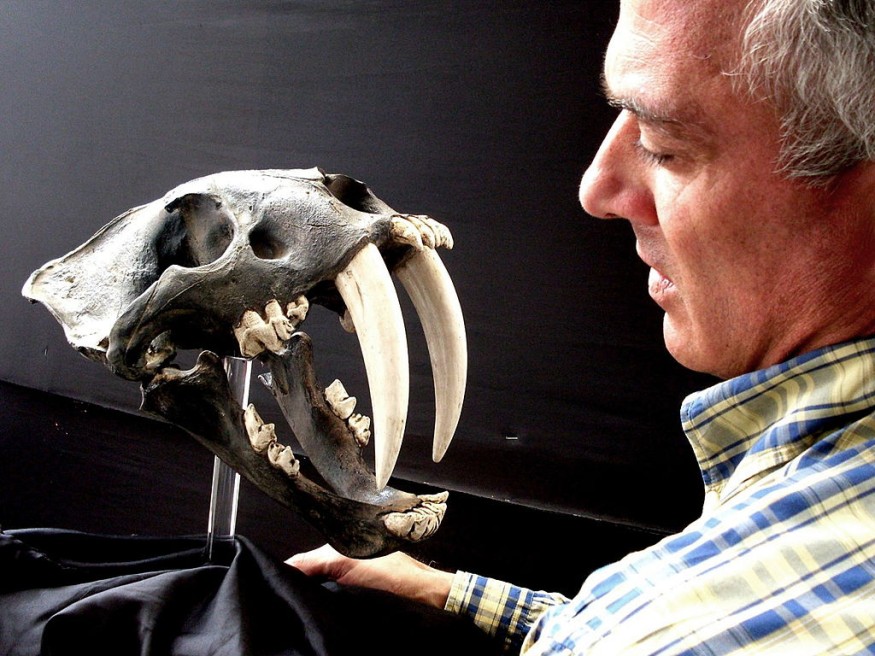More than 30 years ago, a fossil of an unidentified species had been collected from a site known as the Santiago Formation in Oceanside, a city in San Diego County, California.
The remains of the animal were believed to be of saber-toothed carnivore that may have once hunted tapirs and tiny rhinos through the ancient rainforests of Southern California.
Paleontologists at the San Diego Natural History Museum (The Nat) estimated the mysterious 'hypercarnivore' to be about 42 million years old, according to LiveScience, and "had been very properly identified as a meat-eating animal" when first discovered, according to study co-author Ashley Poust, a postdoctoral researcher in vertebrate paleontology at the Nat. The specimen, which consisted of almost complete lower jawbone and a set of well-preserved teeth suggested so.
The species dates back to the Eocene epoch (55.8 million to 33.9 million years ago), according to the American Museum of Natural History.
A mysterious 'hypercarnivore'

When the fossil was first discovered in 1988, museum paleontologists originally thought the 'formidable teeth' might belong to a Nimravidae - an extinct family of carnivorans, sometimes known as false saber-toothed cats, whose fossils are found in North America and Eurasia. Nimravids are not considered as true cats, but generally classified as separate family of creatures.
Later on, study co-author Hugh Wagner, also a paleontologist at the Nat, reported in a new study published in the journal PeerJ that the teeth might belong to a "more mysterious group of hypercarnivores" known as the machaeroidines.
The taxonomically small clade of early and middle Eocene carnivorous mammals has low diversity, with only a handful of species described from North America and Asia, the authors said.
The new species was considered as youngest known machaeroidine and first to evidence the presence of multiple machaeroidine lineages and linked its extinction to the faunal turnover (middle to late Eocene transition) in North America.
Animal with blade-like teeth
The newly discovered creature was named Diegoaelurus vanvalkenburghae in honor of San Diego County where it was found, and scientist Blaire Van Valkenburgh, a past president of the Society of Vertebrate Paleontology who contributed greatly to present understanding of carnivore evolution.
"Finding this particular group was pretty surprising," said Poust, for the reason that no other machaeroidine specimens in the U.S. had been found west of the Rocky Mountains. "We didn't know that these occurred out here at all."
The creature was estimated to be about the size of a bobcat based on its jawbone, with blade-like, slicing teeth.
However, Poust notes that the D. vanvalkenburghae may have lived a different environment about 42 million years ago compared to what is currently the San Diego County, "with a period of extensive warming, which fueled the growth of hot, humid rainforests around the world," according to the American Museum of Natural History.
Theoretically D. vanvalkenburghae may have preyed on lemur-like primates, marsupials, boar-size tapirs and tiny rhinos inhabiting the lush rainforests of ancient Southern California.
© 2026 NatureWorldNews.com All rights reserved. Do not reproduce without permission.





